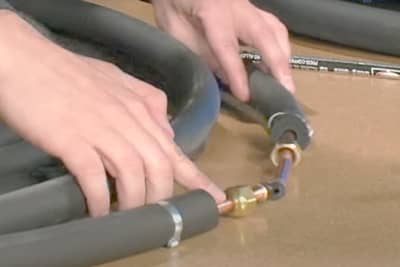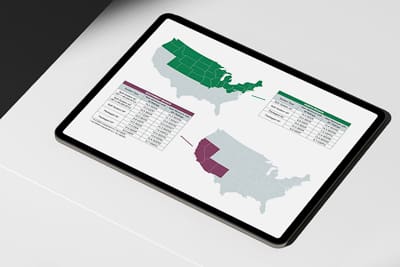What Are Refrigerants?
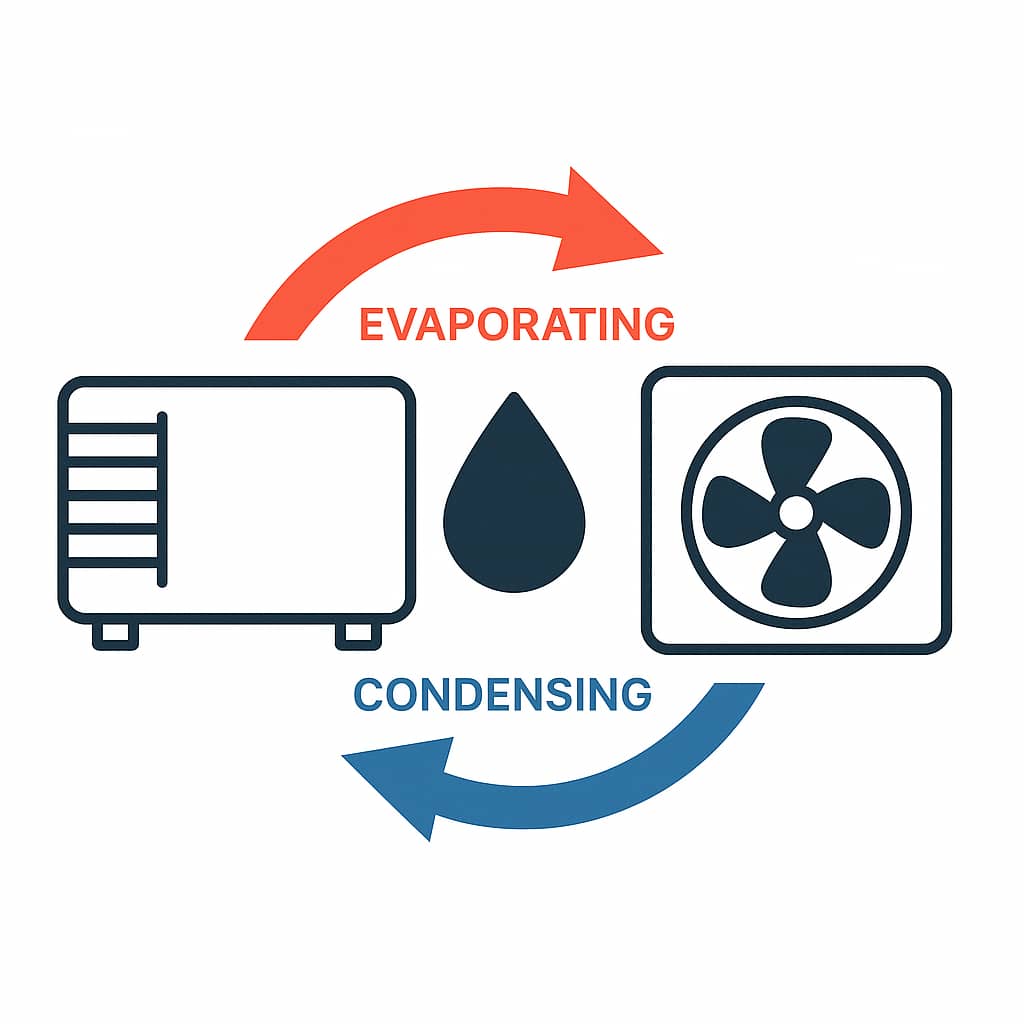
Refrigerants are the lifeblood of your air conditioning or heat pump system. They’re special fluids that absorb heat from inside your home and release it outside, allowing your system to cool (or heat) your living space efficiently. Refrigerants work by evaporating and condensing in a closed-loop system, meaning they aren’t “used up” unless there’s a leak.
The Changing Landscape of Refrigerants
In the last 20 years, refrigerants have gone through major changes due to environmental concerns. Here’s a brief summary of what’s changed:
- R-22 (Freon): Widely used until the early 2010s, now fully banned in new equipment. It damages the ozone layer and is no longer produced.
- R-410A (Puron): Replaced R-22 in new systems starting in 2010. It does not deplete the ozone layer, but it has a high Global Warming Potential (GWP). As of January 1, 2025, manufacturers in the U.S. can no longer produce new systems that use R-410A.
- R-32 and R-454B: These are the next-generation refrigerants now replacing R-410A. They have much lower GWP, better energy efficiency, and are approved for new systems starting in 2025 and beyond.
R-32 vs. R-454B: What’s the Difference?
Both R-32 and R-454B are being adopted as alternatives to R-410A:
- R-32: Slightly more efficient and already widely used globally. Slightly flammable (classified as A2L), so it requires updated system designs. Chosen by manufacturers such as Goodman.
- R-454B: Even lower GWP than R-32 and chosen by many major U.S. manufacturers (like Carrier and Blueridge). Also, mildly flammable (A2L) but designed to be a near drop-in replacement for R-410A.
Each manufacturer chooses based on performance, safety, and efficiency tradeoffs, but both options are modern, environmentally responsible choices.
Can I Still Buy an R-410A System?
R-410A systems are still available for purchase while supplies last, but they are being phased out:
- No new R-410A equipment can be manufactured after January 1, 2025, per EPA regulations under the AIM Act.
- Repairs on existing R-410A systems will still be possible, but refrigerant availability will decrease and prices may rise over time.
- Choosing a new system with R-32 or R-454B is now the better long-term investment.
Will I Need to Add Refrigerant?
Your air conditioning system is a sealed system, so refrigerant should never need to be added—unless there’s a leak. Regular maintenance and leak checks will keep the system operating efficiently. If you ever need refrigerant added, that may be a sign of a problem that should be corrected.
Who Can Handle Refrigerants?
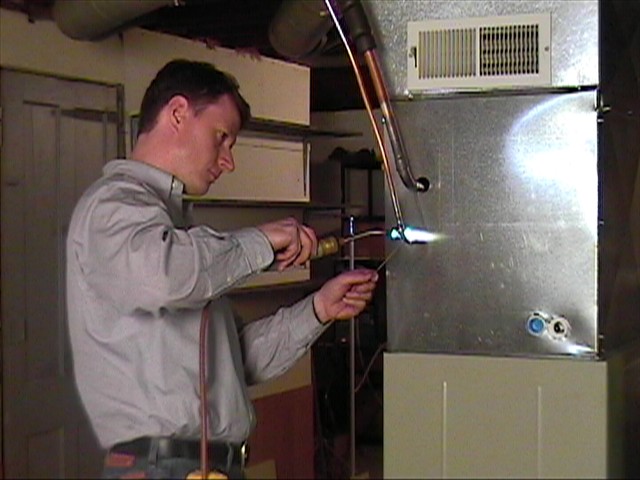
Federal law requires that only EPA Section 608-certified technicians can handle refrigerants. This includes tasks like:
- Charging or removing refrigerant
- Opening refrigerant lines
- Performing system pressure checks
Homeowners can do certain tasks themselves—like setting the unit in place, wiring low-voltage controls, or running refrigerant lines—but cannot legally connect refrigerant hoses, evacuate systems, or release refrigerants.
If you’re installing your own equipment, you can still do much of the work and then hire a certified technician just for the refrigerant steps. This approach is common and cost-effective.
What Happens During Installation?
A certified HVAC technician will:
- Evacuate the system using a vacuum pump to remove air and moisture.
- Charge the system with refrigerant to manufacturer specifications.
- Test for leaks and balance refrigerant pressures for optimal operation.
We recommend having your contractor also solder copper lines and connect high-voltage wiring unless you’re fully comfortable with those tasks.
Why Refrigerant Leaks Matter
Leaking refrigerants are bad for:
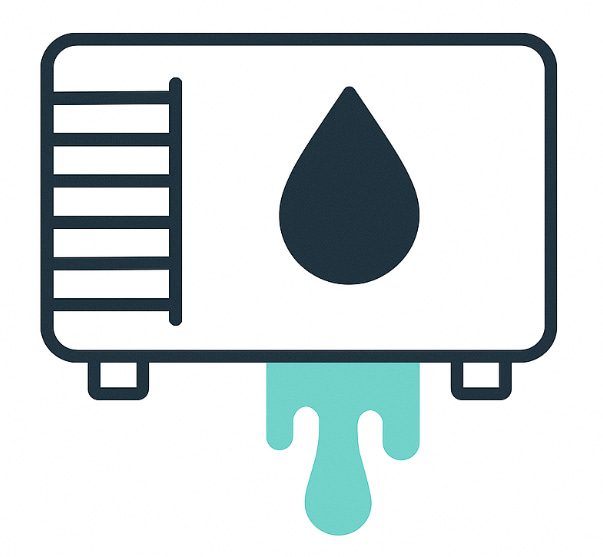
- System performance: You’ll get less cooling and higher energy bills.
- The environment: Even newer refrigerants can contribute to climate change.
- Your wallet: Repairing leaks and recharging refrigerant can be costly.
Proper installation and routine maintenance are key to preventing leaks. Always work with contractors who follow EPA-certified best practices.
Final Thoughts for Homeowners
Refrigerant rules have changed—and for good reason. Modern refrigerants like R-32 and R-454B help reduce environmental impact and improve energy efficiency. When buying or installing a new system, choosing the latest refrigerant technology ensures your system will remain compliant, repairable, and efficient for years to come.
Have questions about choosing or installing your next HVAC system? Our team at Alpine Home Air can help. We also offer a Contractor Assistance Program to connect you with licensed professionals in your area.
